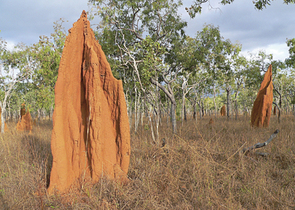Nature Conservation 2/2011 — 11. 7. 2011 — International Nature Conservation — Print article in pdf
The Lakefield National Park – A Godforsaken Nook in Queensland

The Lakefield National Park, second-largest national park in Queensland, Australia, features spectacular wetlands and extensive river systems. The park stretches from Princess Charlotte Bay in the north to the town of Laura, covering 5,370 km2. The dominant vegetation in the park is eucalypt woodland and gallery forest associated with waterways.
The park is known for its populations of water birds such as the Black-necked Stork (Ephippiorhynchus asiaticus), Royal Spoonbill (Platalea regia), Straw-necked Ibis (Threskiornis spinicollis), Raja Shelduck (Tadorna radjah) and the Magpie Geese (Anseranas semipalmata). Other remarkable birds inhabiting the protected area are various parrot species,i.a.the large smoky-grey or black Palm Cockatoo, also known as the Goliath Cockatoo (Probosciger atterimus). There are two species of crocodile in the park: freshwater (C. johnsoni) and saltwater (C. porosus), the latter being the largest of all living reptiles. Visitors can also meet the Agile Wallaby (Macropus agilis) or the Dingo (Canis lupus dingo). In early evening numerous groups of the Little Red Flying Fox (Pteropus scapulatus) regularly fly across the area from their roosting sites. There are many bush campgrounds throughout the park, and two camps with facilities. Permits are all obtained via self-registration at the boards located throughout the park.

